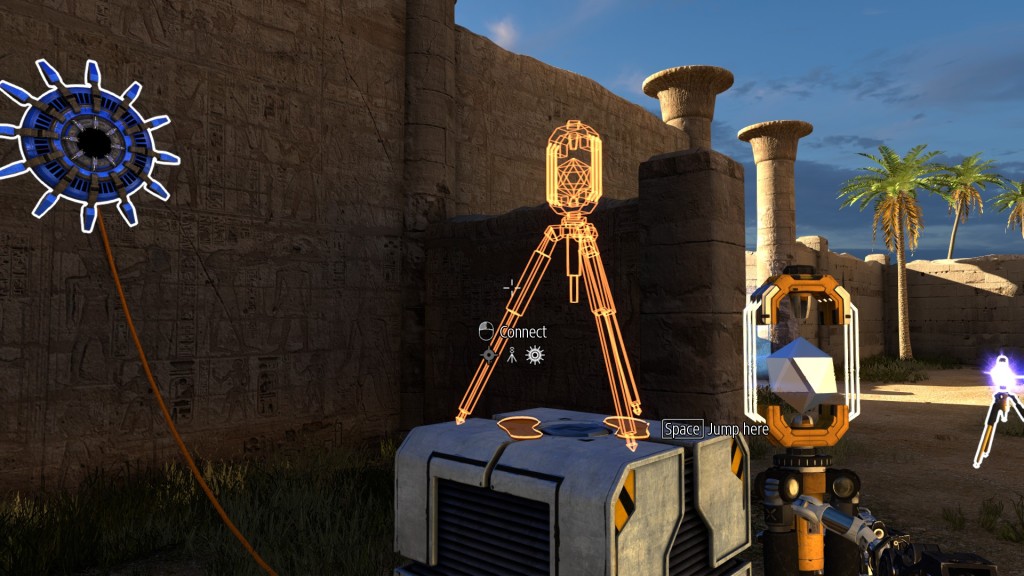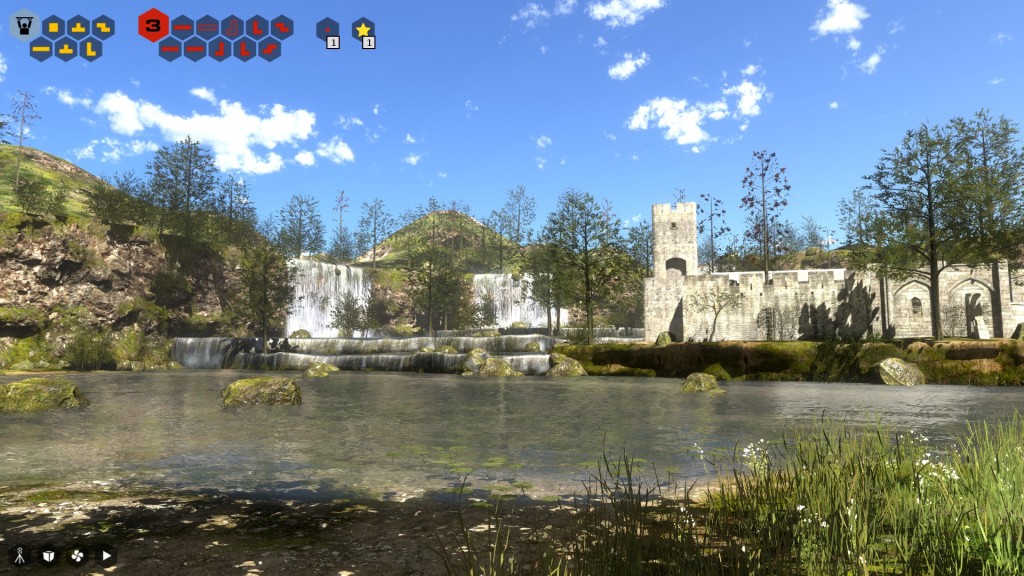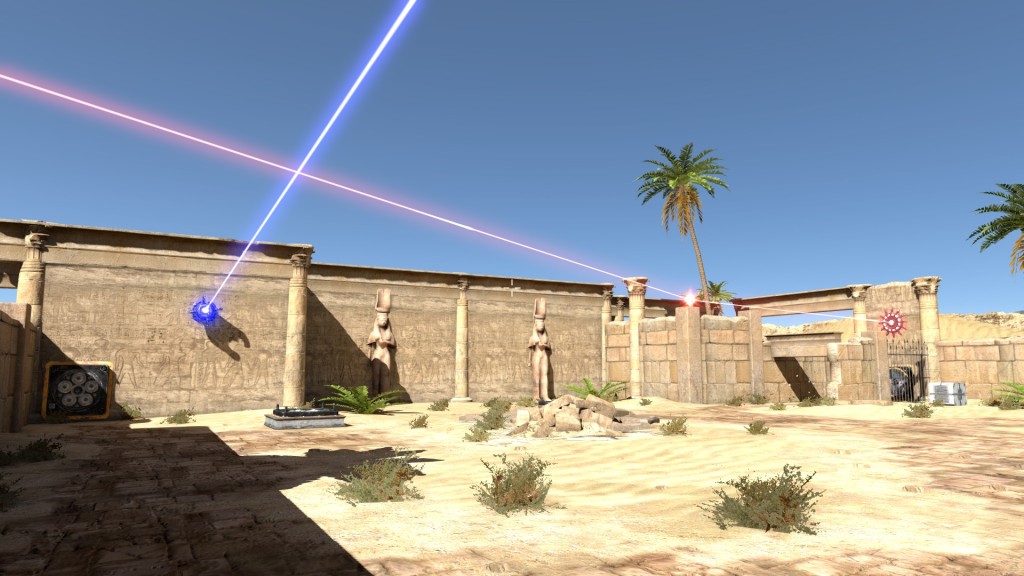
When playing the The Talos Principle, I simultaneously feel clever and philosophical. Its unique mix of mind-melting puzzles and thought-provoking conversations have caused me to think deeply about both the challenges I’m facing and the true nature of human consciousness. The various puzzle mechanics are easy to learn, hard to master and interesting in their interactions. The true greatness of this game, however, lies in the sheer fact that I wanted to press forward with uncovering the mysteries that surrounded me regardless of the puzzles presented. The Talos Principle is a triumph of game design, and an experience that absolutely shouldn’t be missed.
The quickest comparison that The Talos Principle invites is in its similarities to Portal. Both games feature first-person puzzles with a disembodied voice guiding the player through, but whereas Portal uses humor to draw the player forward, The Talos Principle relies on intrigue. You are told early in the game that your mission is to complete the various puzzles set before you and that you are free to roam anywhere you want to do so, with the sole exception being the large tower in the middle of the world. Naturally then this becomes the goal, and as you progress through the game, you unlock more and more floors to climb higher and delve deeper into the mystery of the environment.

The main puzzle mechanics involve manipulating various mechanical objects and combining them in interesting ways to progress through a level and reach a “sigil” (tetromino piece) at the end. The different objects all allow for slightly different outcomes, with a “jammer” allowing you to shut down an electronic barrier door or a mechanical drone as long as it’s targeting them, and a “connector” letting you connect a laser beam from one point to various other points (be them other connectors or door locks). There are five main tools that get unlocked through the game, and their uses are easy to understand and clever, but the real amazement comes in discovering all of their interactions.
It would be easy for a game like The Talos Principle to feel overly complicated with all of its different parts, but it has some of the best pacing of any game I’ve ever played. Each new element is introduced slowly through a series of ever increasingly complex puzzles, teaching you exactly how to use it and helping you discover the myriad of different interactions possible. Just when you begin to feel confident, the game throws you into a puzzle that combines elements in ways you don’t expect or introduces a new object into the puzzle-solving. The game never feels too easy or too difficult, but straddles perfectly the balance of being challenging while also being fair.

Possibly my favorite aspect of the puzzles in The Talos Principle is the pervasive design philosophy of “almost, but not quite.” At the beginning of each level, you can always see the goal clearly, and through experimentation it always feels fairly easy to get “close.” I can’t count the number of times I was just “one door away” or needed to be able to move an object just a few feet in a given direction, and this really encourages persistence in problem-solving. Typically I needed to radically alter my design from this “almost close” solution to actually finish the puzzle, but I really enjoyed that I never started a level feeling hopeless. I tend to get frustrated when I feel like I have no clue where to begin, or no idea what to even try, and this was never the case with The Talos Principle.
The only area where the game falls a little flat is in the repetitive use of its tetromino puzzles. The “sigils” you find at the end of each level form the keys you use to unlock new items or areas, and these locks involve fitting these pieces together into a rectangular grid. These puzzles aren’t overly challenging, but they are used a lot and by the end they feel like a nuisance.

The lore of the game is delivered a few ways, from the voice guiding you through the puzzles to text documents and voice logs scattered throughout the world. Also, there are computer terminals located around the world where a conversation occurs between you and what appears to be a computer program. At these various computer terminals, a message can appear asking you a question that basically boils down to another aspect of explaining what it means to be human. It turns out that the philosophical line between human and machine can actually be quite blurry, and the questions you are asked never seem to have easy answers. Its interesting and thought-provoking, and adds to the overall mystery pushing you forward.
The repeated feelings of euphoria when solving the more difficult puzzles in The Talos Project were amazing, and the sense of self-satisfaction achieved is palpable. The game is inventive, creative and mentally challenging without being frustrating. It is an experience that was truly hard to put down, and one that I found myself thinking about constantly while between play sessions. For fans of Portal, this game is a no-brainer, but I think the appeal of The Talos Principle is even broader than that and should be one that everyone takes a chance on.
Pros: Creative puzzle mechanics, interesting lore, great pacing
Cons: Repetitive tetromino puzzles



















